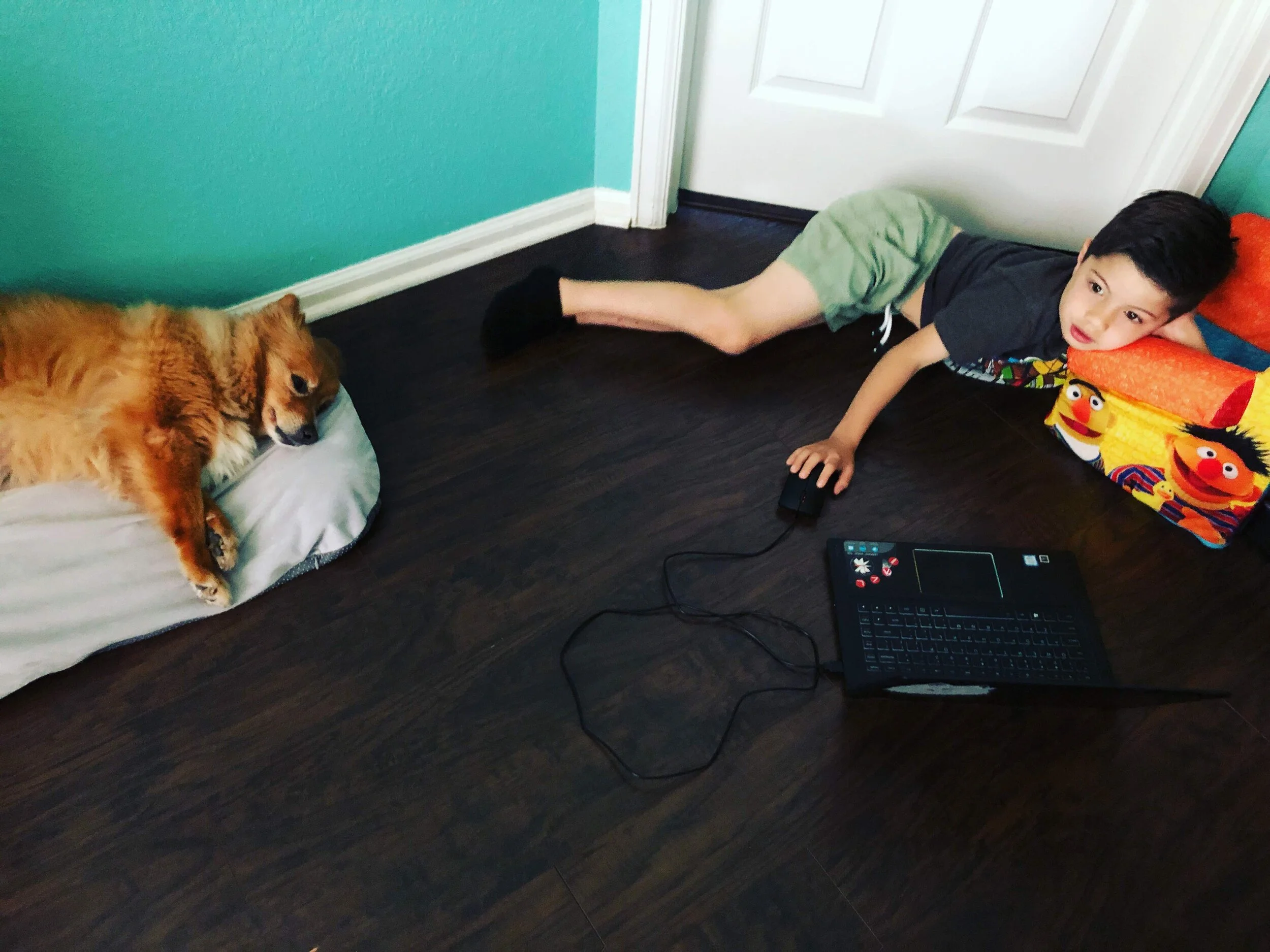How to Be COVID-Kind with Video Calls
many home offices look like this these days
Since the outbreak of COVID-19, there was been a wild increase in the use of video calls. In March, Zoom -- a brand that’s become what “Coke” is to “soda” -- saw its daily usage grow from 10 million users per day to 200 million! The quick adoption of Zoom during a mass migration of employees from office to home environments led to lots of funny and cringeworthy moments. As a PR person, I immediately worried that video calls would add undue volatility to an already unpredictable situation. Video calls can be recorded, screen shot and rebroadcast as we’ve seen -- #poorjennifer. Or who can forget the national political director who turned herself into a potato? Not exactly the work accolade we’d want to be remembered for. Zoom took off in popularity during a time when workers, kids, cats and dogs were all quarantined together. It immediately was an iffy scenario to me!
Stay Strategic and Sensitive
No matter what’s happening, professionals should remember their communication goals when selecting which tool to use to share a message or collaborate across. Email, phone calls, conference calls, texts, messaging apps, and video platforms all allow us to connect. Each alsohave pros and cons depending on the message, context and user. A more sensitive consideration of your audience’s communication style, time constraints, resources and homelife reality is important, too.
Video calls have helped teams retain connection and enabled sharing of content during a time of physical separation. However, they are not always the best tool for all situations. Especially during a pandemic!
I’ve worked remotely in some way since 2009, and exclusively since 2015. In all those years, there were one or two video calls I can recall. After mid-March of this year, it’s been the go-to medium for so many meetings and events.
Before you request a Zoom meeting, consider….is a video call the best tool for this? Would a conference call suffice? Or would a screen-share only video call be the best option for my audience?
Make “Video On” Optional
my own office welcomes all kinds of coworkers each day
How many Zoom meetings have you been on where it’s required everyone has their camera on? How did that make you feel as time went by? That live broadcasting feel adds pressure to many home/work situations that are already tough enough. In my case, my two children are often using the video-equipped laptops to complete elementary school work. Buying an additional camera for my desktop computer was impossible due to high demand until June. Patching in through my phone meant I couldn’t see well and would probably be broadcasting an awkward or disconnected image as I looked away towards my computer screen to follow along. Plus, there’s the likelihood my five-year-old son would run into my office for his millionth hug or meltdown – another pandemic trend I’m observing.
(I got a lock for my office door to help prevent video bombs. My son learned to pick it in minutes.)
Be COVID-Kind during this Tough Time
I’m calling on communicators to help remind their teams to be “COVID-kind.” To be COVID-kind means being emotionally intelligent enough to consider and learn about how your audience prefers to be communicated with at this stressful time. For example, I ask each client during onboarding to rank their preferred communication tools. Once COVID hit, we’ve had frequent conversations about their work environment and new preferences as different work and childcare restrictions rolled out. This helped us agree on when to meet, how often to meet, and which tools we should use to meet. Checking on this weekly continues to help us manage the dynamic nature of this season.
Tailoring your approach per audience is important, especially right now. Try to help others avoid any situation that causes them more anxiety or stress when other communication tools are available. If a team member wants to join with audio only during a video meeting, be accepting. If they need to follow along with mute and video off, don’t automatically assume they’re not paying attention. They’re probably sparing you some household drama! Remember that video calls are one of many communication tools we can use to share information. With all the pressures COVID-19 has brought to our lives, let’s be kind enough get the job done with an extension of grace we could all benefit from.


